odoo/odoo#64976
Created by mahsandu
- label
- odoo:staging.master
- head
- f9887c68dd84196daee8ffed583d1766d372cc93
| odoo/odoo | |
|---|---|
| 14.0 | #64976 |
Install Odoo on IBM Cloud
This documentation will describe how to Install Odoo on IBM Cloud.
Requirements/Prerequisites
You will need an IBM Cloud Pay-As-You-Go or Subscription Account type which can be found here.
Introduction
This docs will describe how to install Odoo on IBM Cloud. These four steps will be needed as follows:
- Step 1: Provision Kubernetes Cluster
- Step 2: Deploy IBM Cloud Block Storage plug-in
- Step 3: Deploy Odoo
- Step 4: Verify Installation
So let's get started.
Step 1: Provision Kubernetes Cluster
- Search for Kubernetes and select Kubernetes Service from the list.
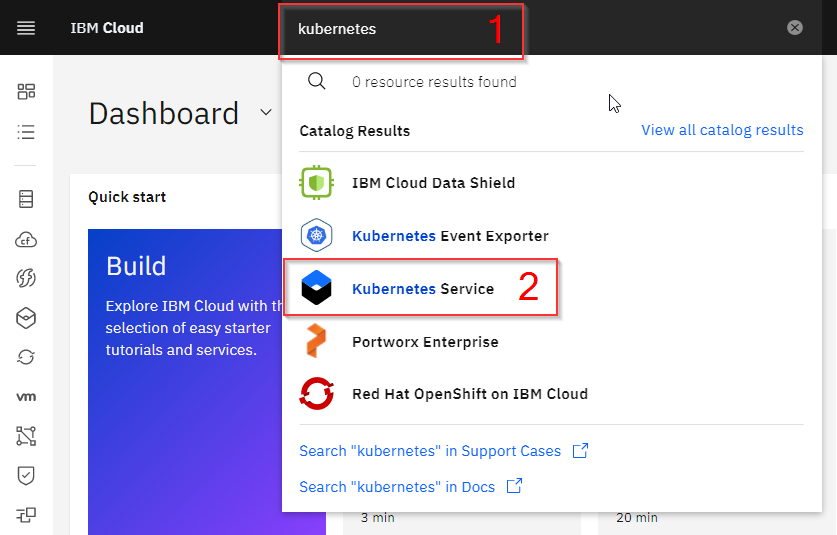
> You will be redirected to the Kubernetes cluster creation page.
Option A: Create free Kubernetes Engine:
- Price Plan: Free
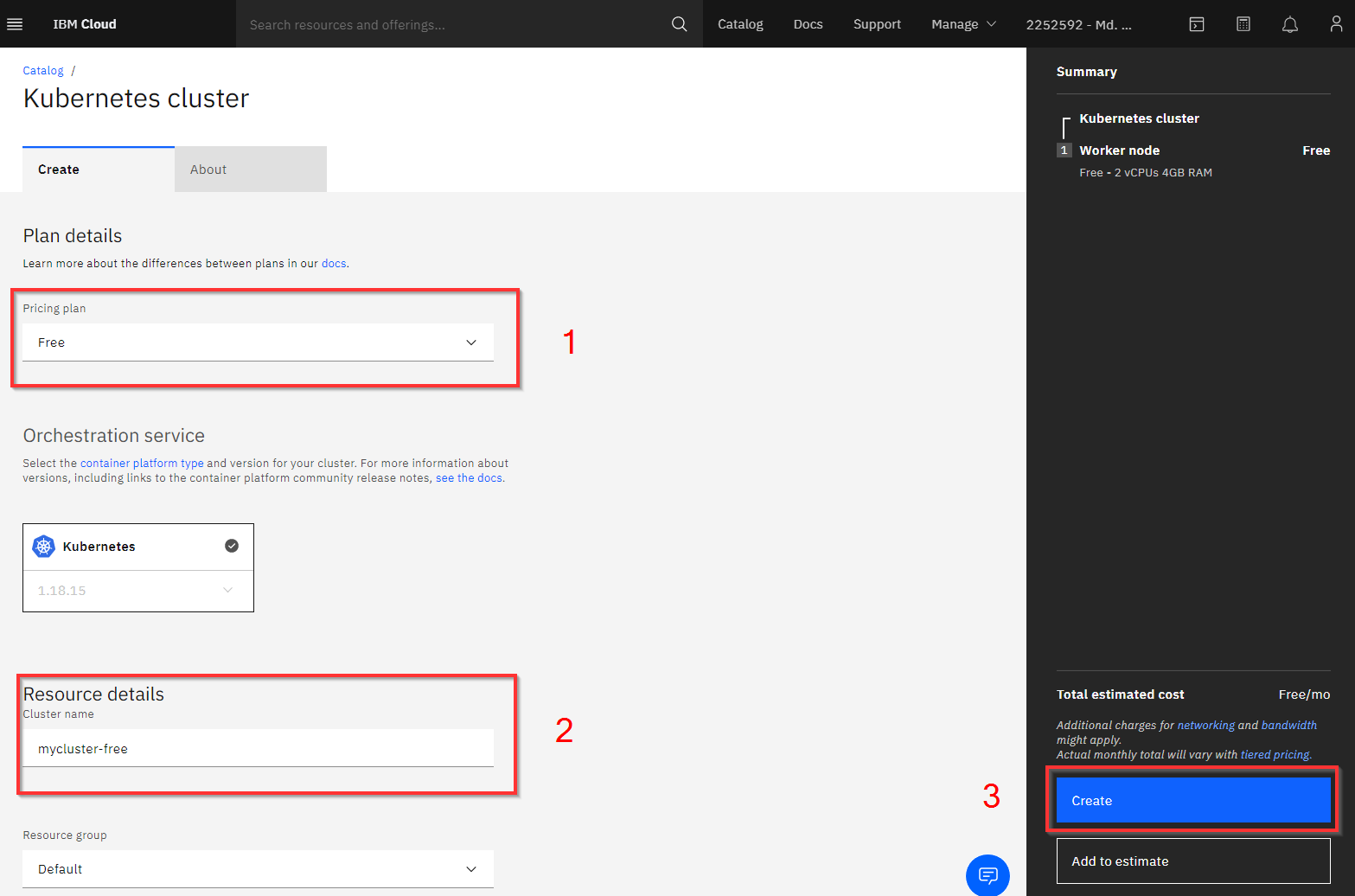
> Enter the cluster name of your choice then click Create to provision the free Kubernetes Cluster.
> Please wait for few moments to provision the cluster.
Option B: Create Standard Kubernetes Engine with the following attributes:
- Price Plan: Standard
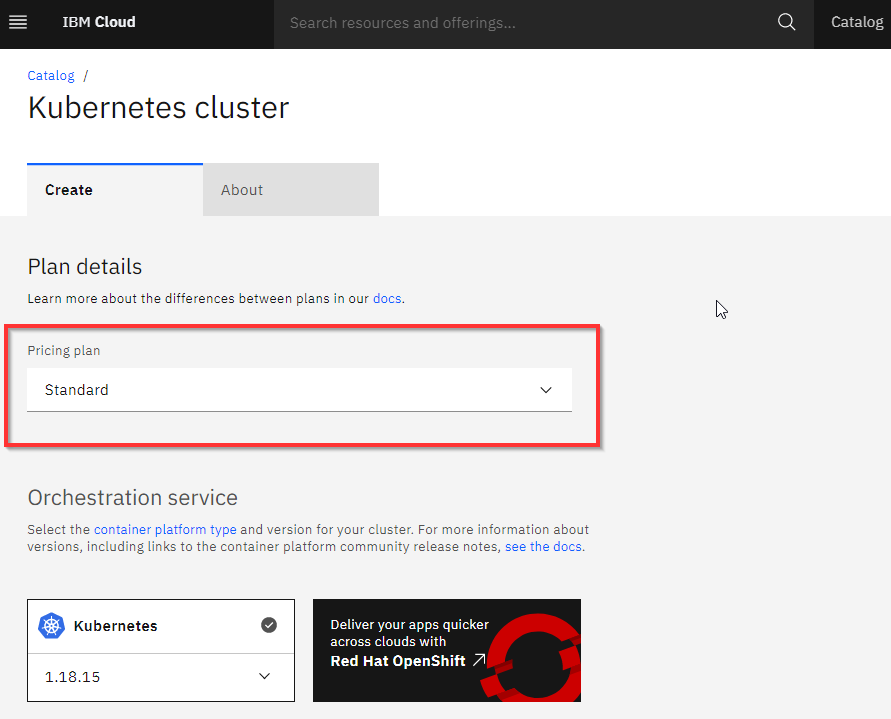
- Infrastructure: Classic
- Availability: Multi Zone
- Metro: Dallas
- 4 VCPU
- 16 GB RAM
- Worker nodes per zone: 3
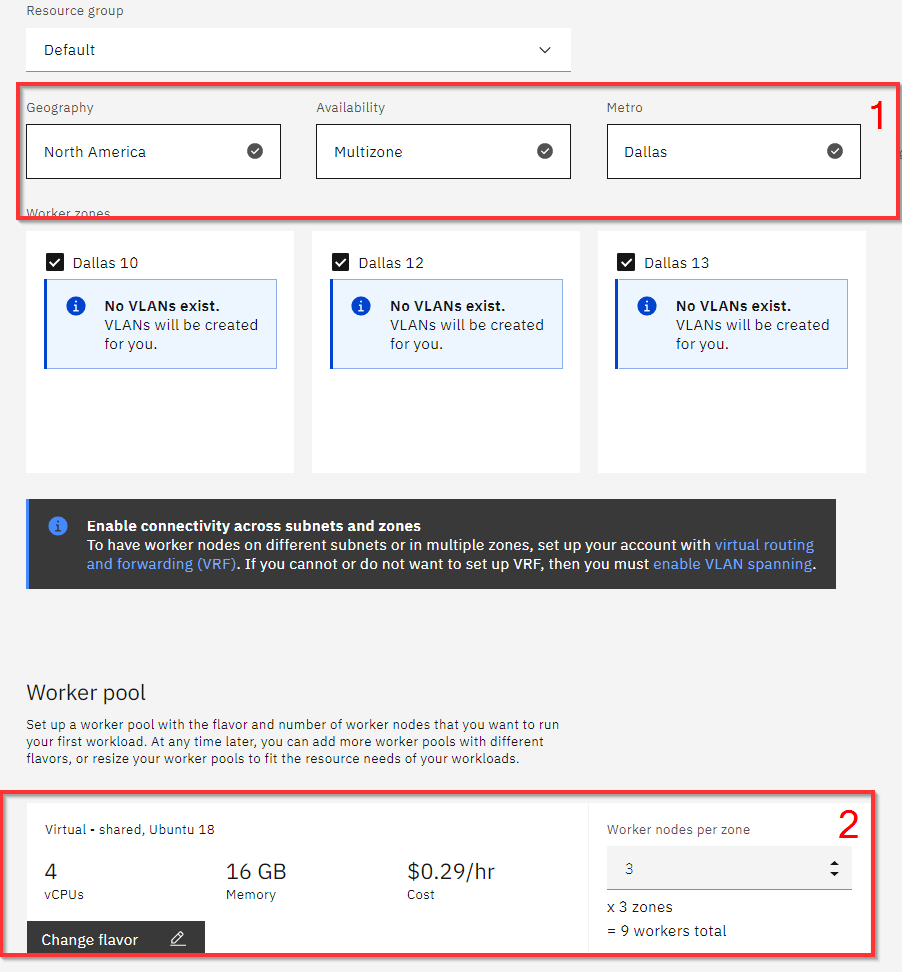
> Enter the cluster name of your choice then click Create to provision.

> Please wait for a few moments to provision the cluster.
Step 2: Deploy IBM Cloud Block Storage plug-in
- Just like in step 1, search for "Block Storage" and Click on it.
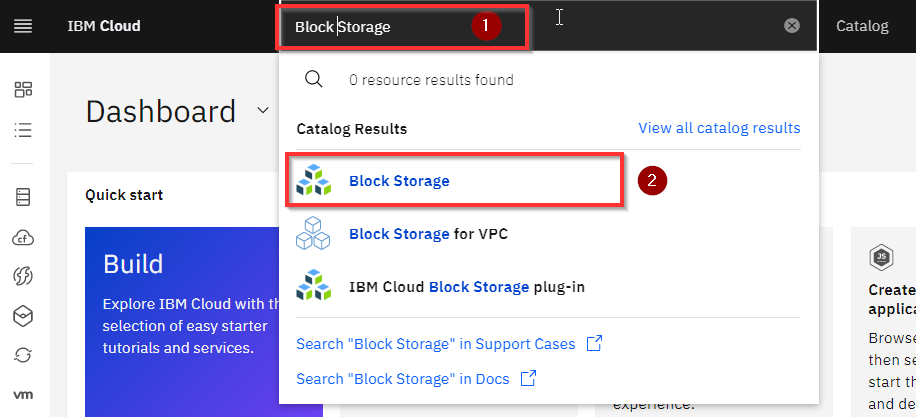
- On the Block Storage page click on Create
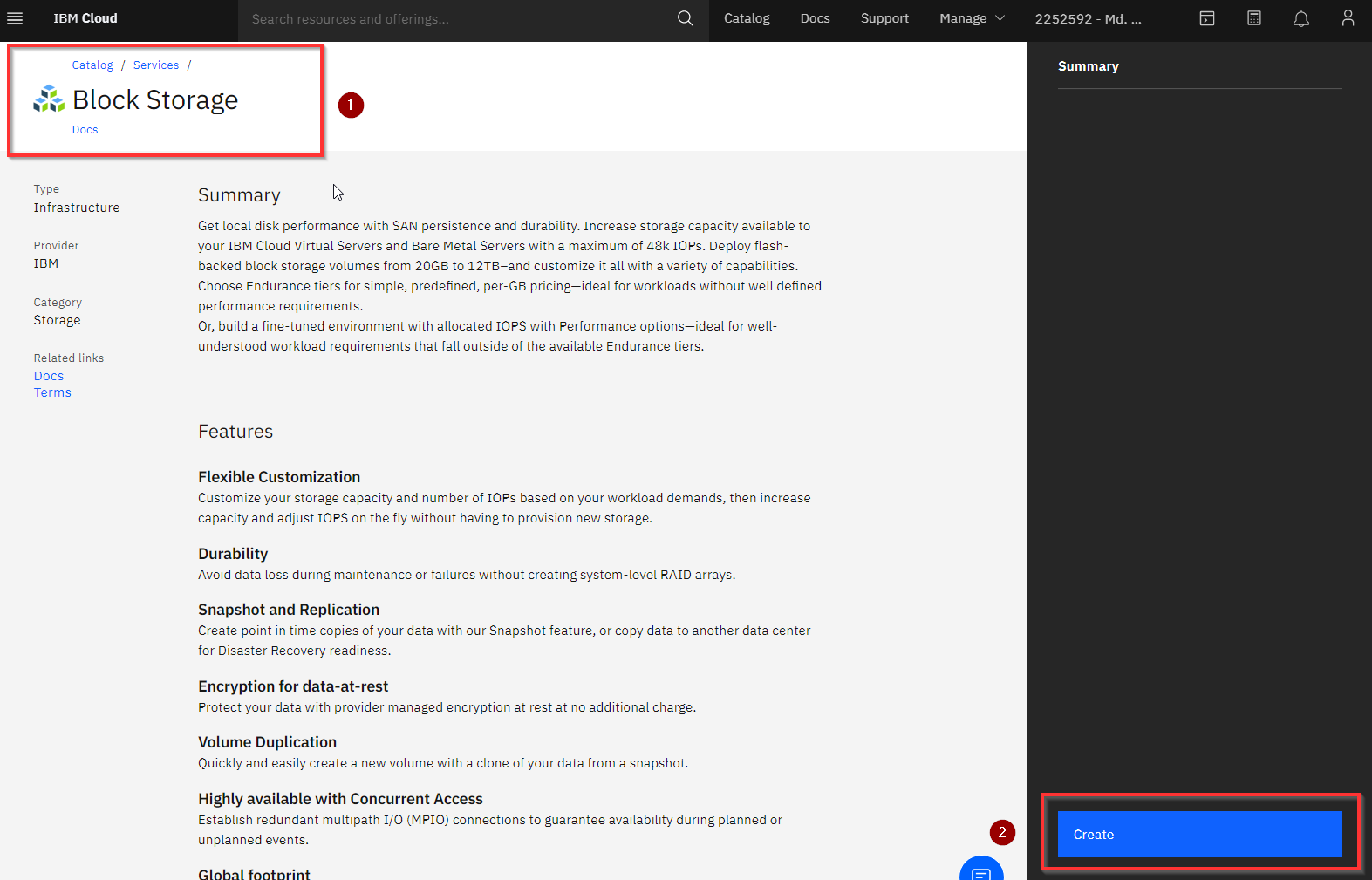
- Now input the storage details
> N.B. Select location as the cluster location.
- Location > Europe > London > LON02
- Billing Method > Monthly > 20 GB
- OS type > Linux
-
IOPS > 2 IOPS/GB
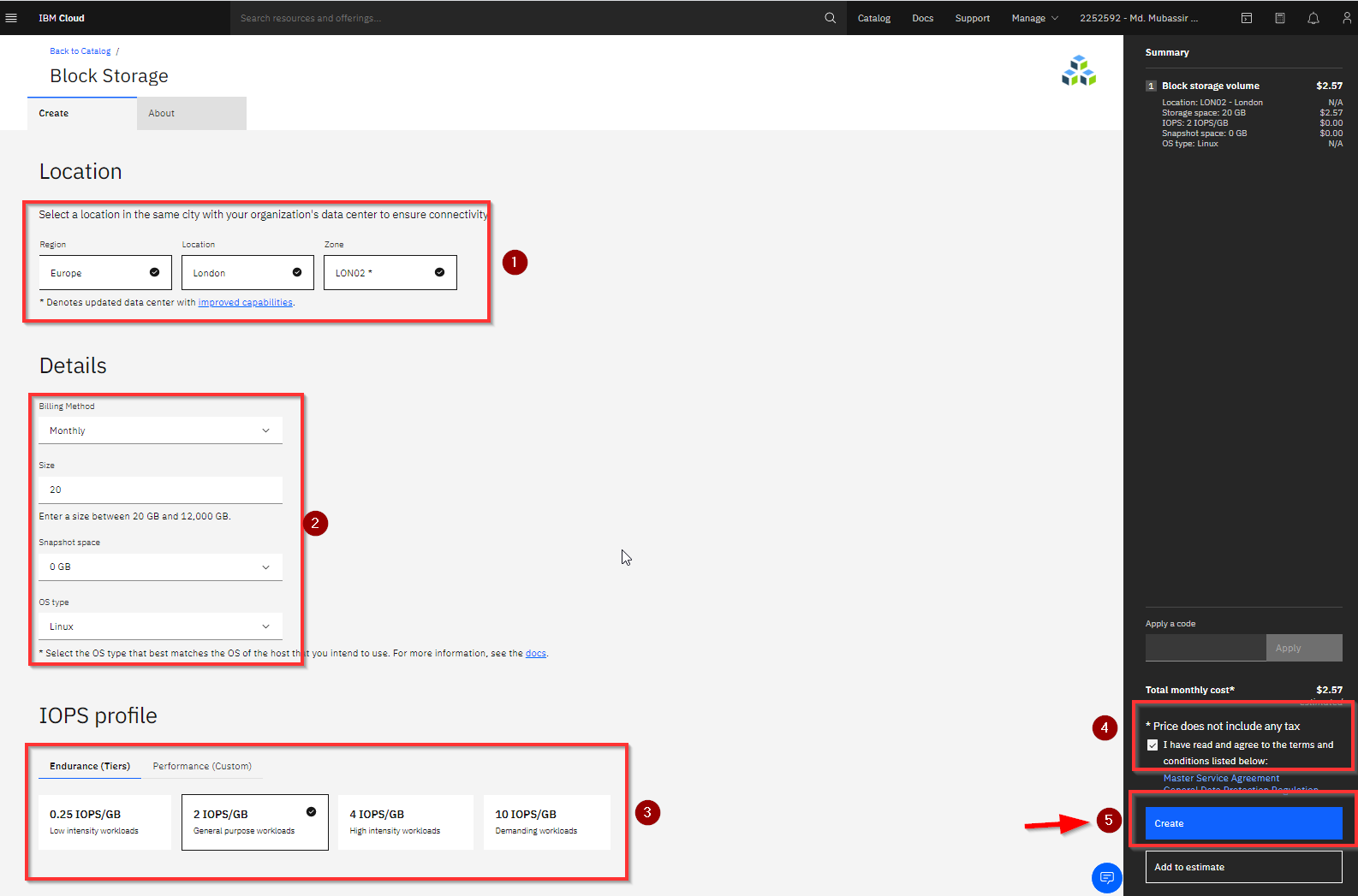
-
Click on “I have agreed to the terms and conditions listed below”.
> Now a storage plugin will be available in the dashboard.
Step 3: Deploy Odoo
- Again Search for Odoo and Click on it.

> You will be taken to the Odoo deployment page.
In the Odoo creation page add the details below:
- Target: IBM Kubernetes Service
- Method: Helm chart
- Kubernetes cluster: mycluster-free
- Target namespace: odoo
- Workspace: odoo
- Resource group: Default

- Check on “I have agreed to the terms and conditions listed below”.
> Click Install to deploy Odoo.
> Please wait for all the process to complete.

Step 4: Verify Installation
- Go to Left Navigation Menu.
- Click on Kubernetes
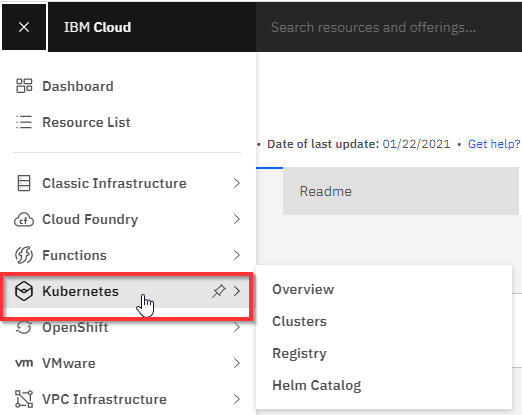
- Click on your Cluster "mycluster-free".

> You will be taken to your clusters overview page where you will see the details of your cluster as well.
- To verify the installation find the Actions..
- Click on it and select
Web terminalfrom the dropdown menu.
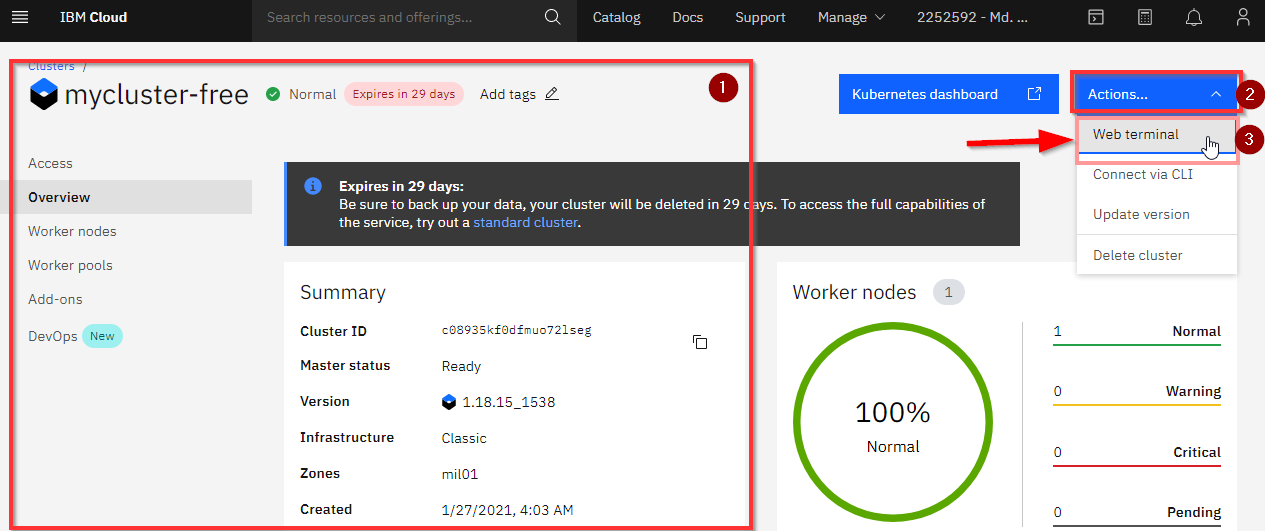
> Click install, then wait for a couple of minutes to finish the process.
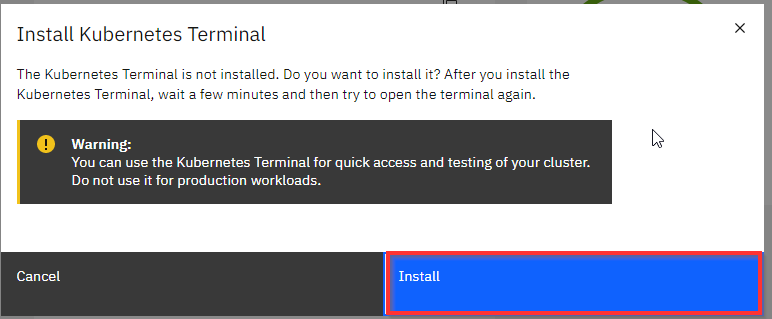
- After completing the installation click on Actions > Web terminal again.
> A command line terminal will appear. Type the command below:
Get the list of pods:
kubectl get ns

See if it is running:
kubectl get pod -n odoo -o wide

The Installation is now done! Enjoy !